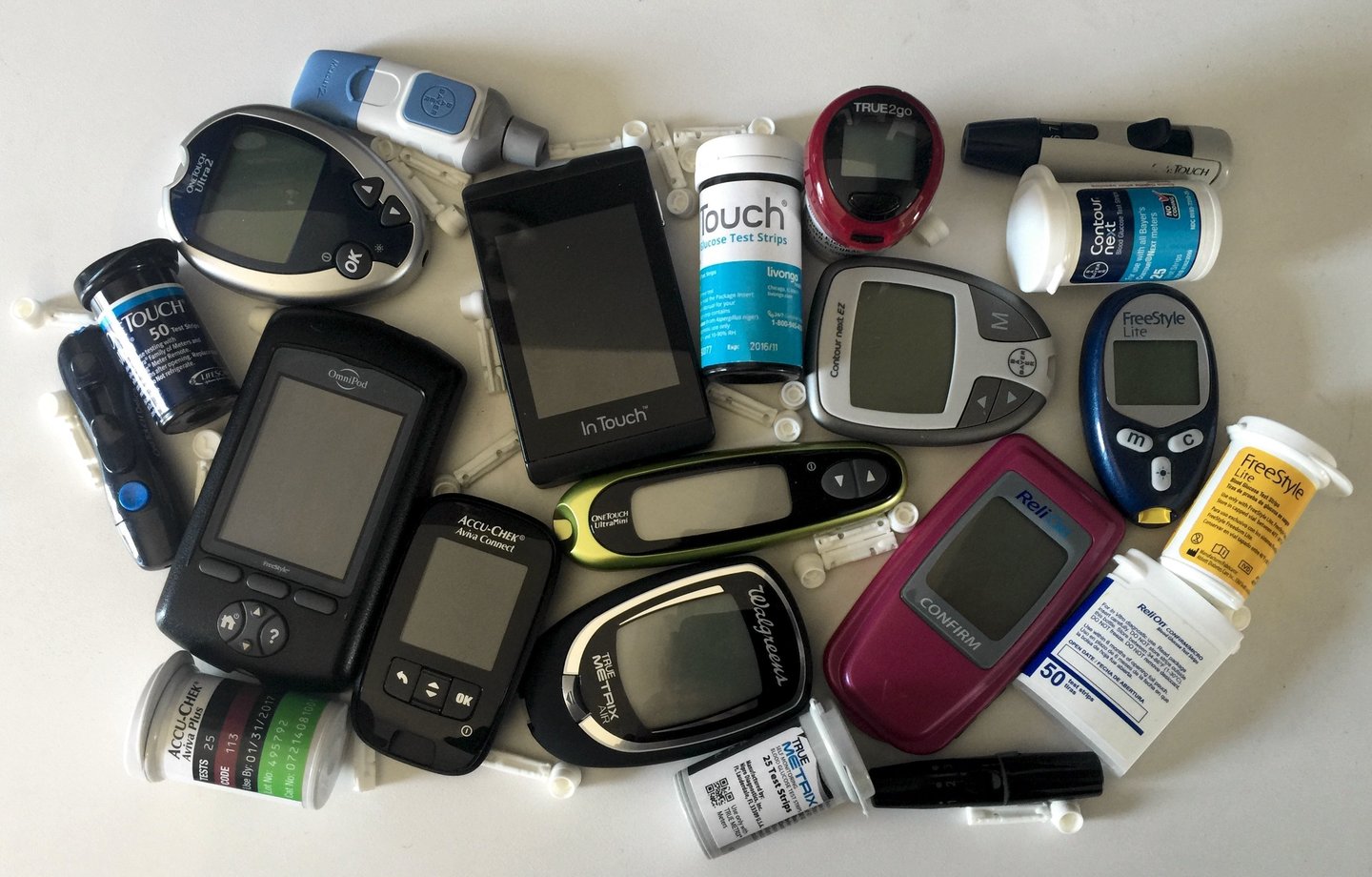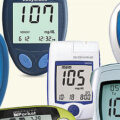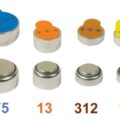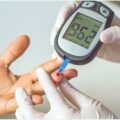A glucose meter, also referred to as a “glucometer”, is a medical device for determining the approximate concentration of glucose in the blood. It can also be a strip of glucose paper dipped into a substance and measured to the glucose chart. It is a key element of home blood glucose monitoring (HBGM) by people with diabetes mellitus or hypoglycemia. A small drop of blood, obtained by pricking the skin with a lancet, is placed on a disposable test strip that the meter reads and uses to calculate the blood glucose level. The meter then displays the level in units of mg/dL or mmol/L.
Since approximately 1980, a primary goal of the management of type 1 diabetes and type 2 diabetes mellitus has been achieving closer-to-normal levels of glucose in the blood for as much of the time as possible, guided by HBGM several times a day. The benefits include a reduction in the occurrence rate and severity of long-term complications from hyperglycemia as well as a reduction in the short-term, potentially life-threatening complications of hypoglycemia.
Many glucose meters can last more than 10 years and still function normally. If you’ve had your glucose meter for a while, you may be wondering when you should consider replacing it. The key to knowing when it’s time for new equipment primarily lies with the accuracy of your machine.
How To Dispose Of Old Glucose Meters
Individual meters can go bad over time. If you have concerns about the accuracy of your meter, consider getting a new one. Check that your meter is working with its strips by using the meter’s control solution (your pharmacist can order the solution). If you eventually get a new one, here is how to dispose an old, faulty or outdated glucose meter:
- Electronic waste like blood glucose meters can be placed in an e-waste recycling drop off point. Check your local council website for guidelines. It’s good to know that some general resources do exist for disposing of used medical supplies, in the form of local collection programs and a few national efforts like the non-profit AFYA.
- Use it to create an art work. Remember that fun Diabetes Art Day, an online effort some years ago where the community collectively used old diabetes supplies to create their own artwork relating to life with diabetes. That was a great way for so many folks to use old test strips and various supplies in a positive, creative way. Lilly Diabetes has more recently shared a lighthearted idea of using old insulin vials in an artsy way to create a “message in a bottle,” marking diabetes anniversaries or other D-moments. Of course, as you’d expect, some in the #insulin4all community have suggested tweaking the message inside those vials to calling on Pharma companies to address the outrageously high cost of insulin. In the end, we have to make do with the options at hand when it comes to disposing of these used supplies.
General Glucometer Usage Instructions
- First, set out your glucometer, a test strip, a lancet, and an alcohol prep pad.
- Wash your hands to prevent infection. If you are not by a sink, it’s okay to just use the alcohol swab. If you are by a sink and wash your hands thoroughly, you do not have to use an alcohol swab.
- Sometimes it helps to warm your hands first to make the blood flow easier. You can rub your hands together briskly or run them under warm water—just be sure to dry them well as wet hands can dilute the blood sample, resulting in a lower number.
- Turn on the glucometer and place a test strip in the machine when the machine is ready. Watch the indicator for placing the blood on the strip.
- Make sure your hand is dry and wipe the area you’ve selected with an alcohol prep pad and wait until the alcohol evaporates.
- Pierce your fingertip on the side of your finger, between the bottom of your fingernail to the tip of your nail (avoid the pads as this can pinch more). The type of drop of blood required is determined by the type of strip you are using (some use a “hanging drop” of blood versus a small drop for strips that draw blood in with a capillary action).
- Place the drop of blood on or at the side of the strip.
- The glucometer will take a few moments to calculate the blood sugar reading. Follow your doctor’s orders for whatever blood sugar reading you get.
- You may use the alcohol prep pad to blot the site where you drew the blood if it is still bleeding.
- Write down your results. Keeping a record makes it easier for you and your doctor to establish a good treatment plan. Some glucometers can store your results in a memory, for easier record keeping.
READ: How To Take A Blood Pressure Reading Manually and Digitally





